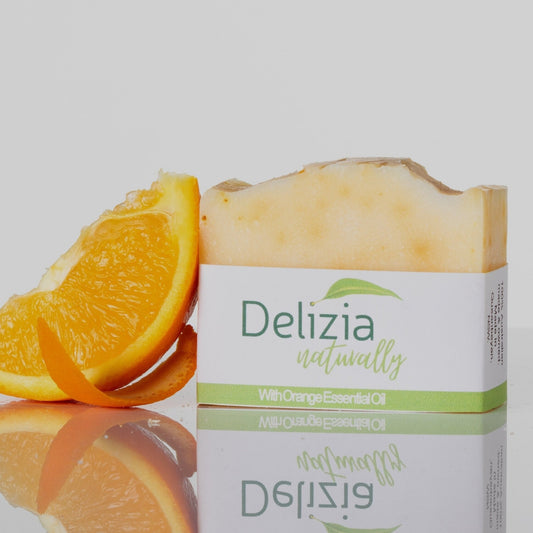Here is a video about how we make Tallow soap - Fragrance Free, at Delizia Naturally. If you Subscribe to our YouTube Channel you can view the types of Tallow soap we make with different essential oils. Scroll down to read our blog...
People have made soap from animal fat for thousands of years. In fact my ancestors did so in Italy. My ancestors would use left over fat from an animal that was not being used up and would transform it into soap. Sometimes they would mix it with used cooking oil, when the fat was melted down to make soap. They used botanicals from plants they found in the countryside or sometimes no botanicals at all.
These days the process we use has some similarities and some developments. We triple render (melt and purify it) all of our Tallow which is either grass fed beef or grass fed lamb. (See here for a link on how we render our tallow three times.) We then add essential oils for fragrance and most of our tallow soap is 100% tallow, we don't add any other fats or oils. The only exception is our Shampoo Bar. Which contains, Tallow, Coconut Oil, Olive Oil Sweet Almond Oil and essential oils.
The similarities remain in that the soap is still great for sensitive skin, it does not contain any artificial or harmful ingredients, and will nourish your skin.
There are many other informative blogs and videos out there about making soap from tallow. So in an effort not to repeat the same information I have noted those things which I have not yet found mentioned. When making soap from Tallow there are a few points to consider:
Have everything ready
And I mean, everything! From bowls, to spatulas to a bottle of vinegar at the ready in case of a lye or soap mix spill. Making soap is as much an art form as it is a science. From a scientific point of view, things can happen quickly so make sure you're not running around looking for ingredients or equipment when you're about to make a batch of soap.
Temperatures
Ensure that the temperature of your tallow and lye (sodium hydroxide) mixture are both below 40°Celsius (104 Fahrenheit). I have had many a soap disaster because I have rushed a soap mixture. The effort required to triple render the fat and prepare the tallow deserves patience when making soap.
Document the journey
Write down the details of the batch. The type of soap, the volume, the oils used, the superfat, the date poured, the date cut, the fragrance, the water content and anything else you think may be relevant. In this way you can refer to it later if you need to for subsequent batches - see the example below.
|
Type |
|
|
Fragrance |
|
|
Superfat |
|
|
Date Poured |
|
|
Date out of mold |
|
|
Date + 10 days |
|
|
Date + 4 weeks |
|
|
Date + 6 weeks |
|
|
Comments |








